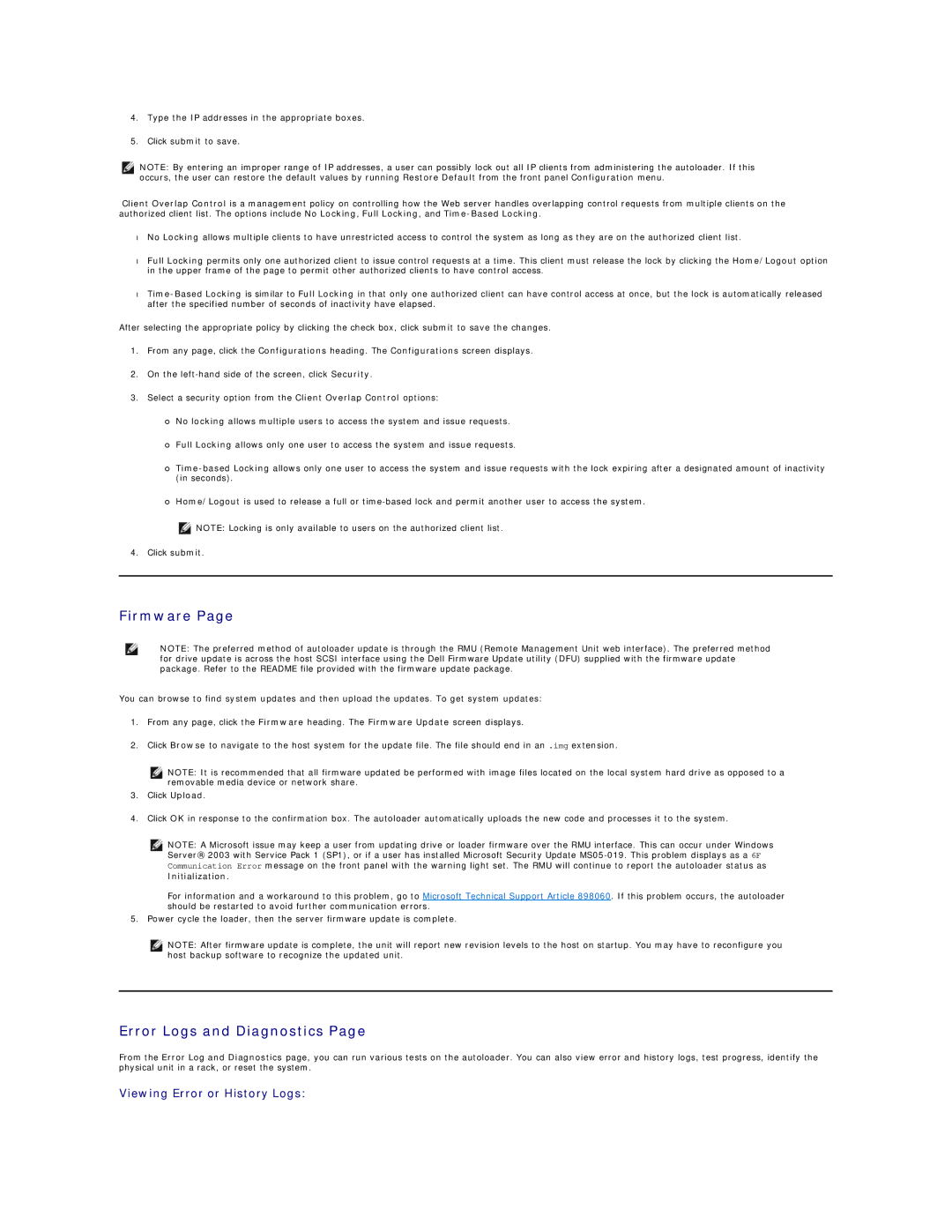
4.Type the IP addresses in the appropriate boxes.
5.Click submit to save.
NOTE: By entering an improper range of IP addresses, a user can possibly lock out all IP clients from administering the autoloader. If this occurs, the user can restore the default values by running Restore Default from the front panel Configuration menu.
Client Overlap Control is a management policy on controlling how the Web server handles overlapping control requests from multiple clients on the authorized client list. The options include No Locking, Full Locking, and
•No Locking allows multiple clients to have unrestricted access to control the system as long as they are on the authorized client list.
•Full Locking permits only one authorized client to issue control requests at a time. This client must release the lock by clicking the Home/Logout option in the upper frame of the page to permit other authorized clients to have control access.
•
After selecting the appropriate policy by clicking the check box, click submit to save the changes.
1.From any page, click the Configurations heading. The Configurations screen displays.
2.On the
3.Select a security option from the Client Overlap Control options:
¡No locking allows multiple users to access the system and issue requests.
¡Full Locking allows only one user to access the system and issue requests.
¡
¡Home/Logout is used to release a full or
NOTE: Locking is only available to users on the authorized client list.
4. Click submit.
Firmware Page
NOTE: The preferred method of autoloader update is through the RMU (Remote Management Unit web interface). The preferred method for drive update is across the host SCSI interface using the Dell Firmware Update utility (DFU) supplied with the firmware update package. Refer to the README file provided with the firmware update package.
You can browse to find system updates and then upload the updates. To get system updates:
1.From any page, click the Firmware heading. The Firmware Update screen displays.
2.Click Browse to navigate to the host system for the update file. The file should end in an .img extension.
NOTE: It is recommended that all firmware updated be performed with image files located on the local system hard drive as opposed to a removable media device or network share.
3.Click Upload.
4.Click OK in response to the confirmation box. The autoloader automatically uploads the new code and processes it to the system.
NOTE: A Microsoft issue may keep a user from updating drive or loader firmware over the RMU interface. This can occur under Windows Server® 2003 with Service Pack 1 (SP1), or if a user has installed Microsoft Security Update
For information and a workaround to this problem, go to Microsoft Technical Support Article 898060. If this problem occurs, the autoloader should be restarted to avoid further communication errors.
5. Power cycle the loader, then the server firmware update is complete.
NOTE: After firmware update is complete, the unit will report new revision levels to the host on startup. You may have to reconfigure you host backup software to recognize the updated unit.
Error Logs and Diagnostics Page
From the Error Log and Diagnostics page, you can run various tests on the autoloader. You can also view error and history logs, test progress, identify the physical unit in a rack, or reset the system.
